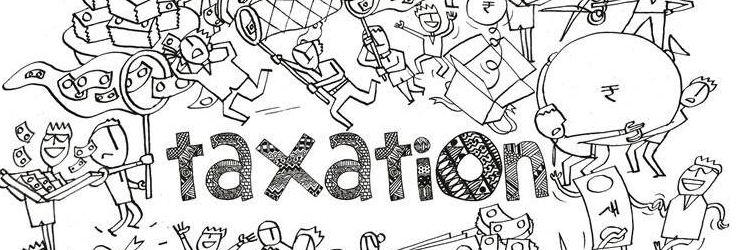
Budget Effect on Taxes in India
The Finance Minister of India, Arun Jaitley, has presented the Finance Bill, 2017 after the mammoth stride of demonetization and before the enactment of GST with the assortment of tax cuts and hits. Let’s see how this budget will impact taxes in India.
Individual Taxation
Reduction in Slab Rate: The proposal would reduce the personal income tax rate to 5 percent from the existing 10 percent for those in the salary bracket of Rs 2.5 lakh to Rs 5 lakh. The proposed individual income tax slab rates are below:
| Existing income slab (INR) | Existing tax rate (%) | Proposed tax rate (%) |
| Up to 250,000 | Nil | Nil |
| 250,001 to 500,000 | 10% | 5% |
| 500,001 to 1,000,000 | 20% | 20% |
| Above 1,000,000 | 30% | 30% |
This would provide savings of INR 12,500 for every person with an income greater than INR 5,00,000.
Corporate Taxation
Corporate tax rate changes: All existing companies whose turnover is 50 crores would be taxable at a rate of 25 percent, applicable from Assessment Year 2018-19 onwards.
MAT changes: The Minimum Alternate Tax (‘MAT’) credit would be allowed for 15 years (as opposed to the existing 10 years). MAT Adjustment would be allowed on first time adoption of IND-AS.
Promoting digital economy: To encourage transparency and discourage cash transactions, Finance Minister Jaitley has proposed reducing the allowed cash payments from INR 20,000 to INR 10,000. This would be applicable for payments made for acquisition of fixed assets as well. Cash transactions in excess of receipts of INR 3 lakhs would be prohibited, and a penalty equal to the amount of receipt would be levied for contravention of the proposed provisions.
Interest payment to Associated Enterprise (AE): Interest expenses in excess of Rs 1 Cr paid by an entity/ Permanent Establishment of Foreign Company to its AE would be restricted to 30 percent of its EBITDA (Earnings Before Interest, Taxes, Depreciation and Amortization). The excess interest paid to the AE would be allowed to be carried forward for a period of eight years.
Time period and indexation for long term capital gains: If immovable property is held for more than 24 months (as against the current 36-month limit), then gains arising from its transfer would be long term capital gains. The base year for the cost of inflation index would shift to 1 April 2001 from 1 April 1981.
Reduction in presumptive rate of tax: To promote digital transactions, the presumptive tax rate on revenue earned through non-cash modes would drop from 8 percent to 6 percent.
Indirect Taxes
In view of the upcoming transition to GST, there are no major changes in the indirect taxes. The Finance Minister has affirmed rolling out GST within given timelines, without giving any specific dates, and GST awareness training will start on 1 April, 2017. The configuration of IT systems for GST is on schedule. The likely date of implementation is 1 July 2017.
Other indirect tax proposals that could impact the economy in a positive way are explained hereunder:
An important proposal is to withdraw R&D cess as of 1 April, 2017.The service tax abatement of R&D also stands to be withdrawn.
To emphasize the Make in India initiative, the custom and excise duties on certain inputs and raw materials used for manufacturing final products in the automobile and solar power sectors (among others) would be reduced. However, as always excise duty on tobacco products would be increased.
While there are no major reductions in tax rates for Individual/Salaried Employees, and the expected increase in exemptions/deductions failed to materialize, India as a whole has welcomed the absence of any major indirect tax amendments in the gust of upcoming GST. Let’s hope that progress on GST is maintained and it is rolled out as stipulated.
To learn more about how Avalara can help you with GST automation, contact us through https://www.avalara.com/in/products/gst-calculation/
This blog is contributed by CA Cherry J Bansal.



